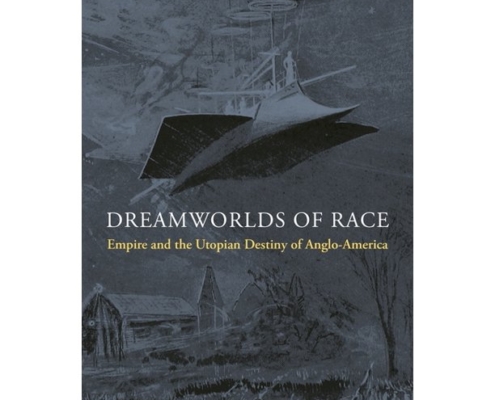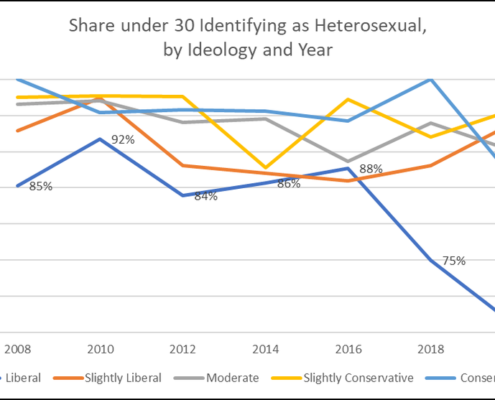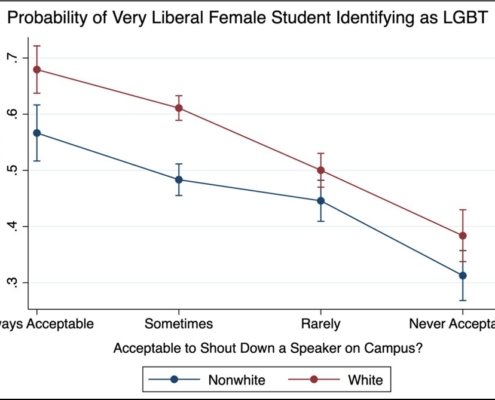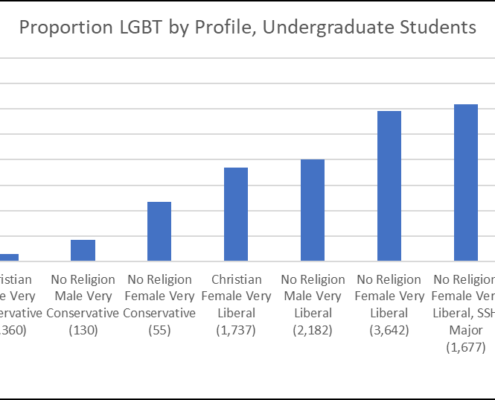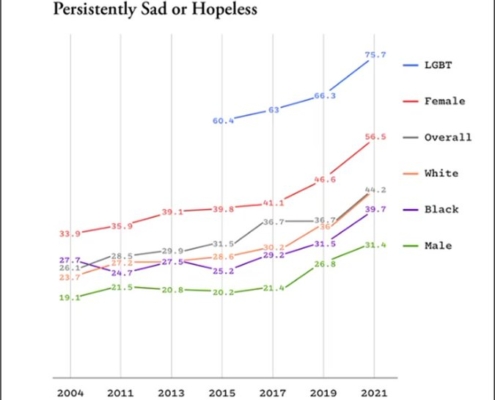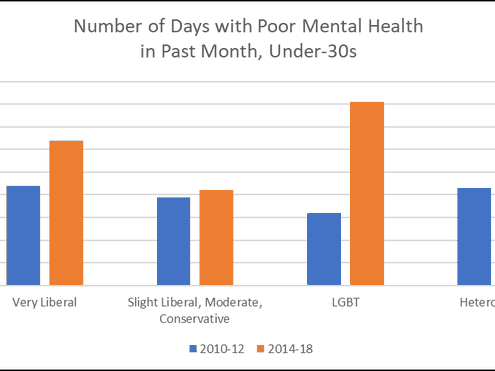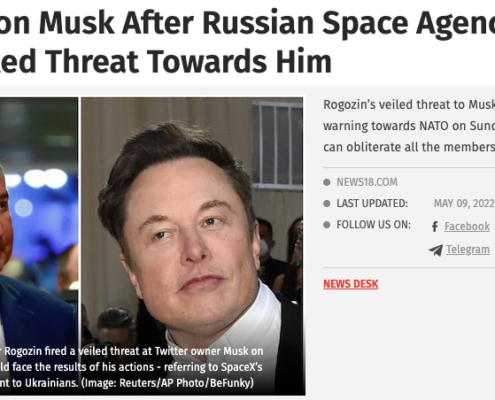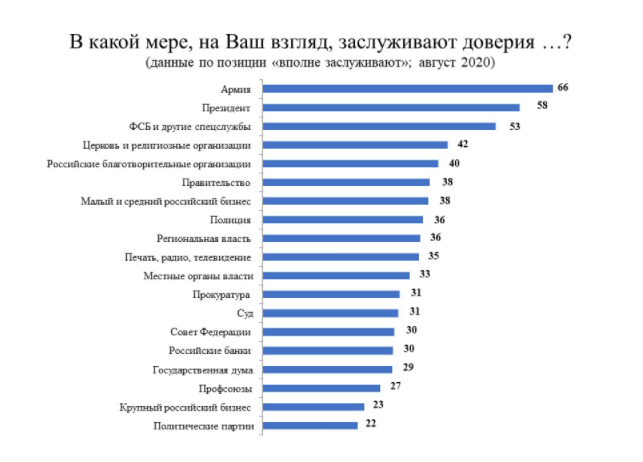As recently as last month, I was struck by the similarity of a headline on the popular Children’s Health Defense website to the headline of an article I had read elsewhere some years ago, dated 2012. The CHD article was titled “6 Companies Control 90% of What You Read, Watch and Hear. Here’s Why You Should Care,” by Rebecca Strong. The 2012 article was titled “Six Jewish Companies Control 96% of the World’s Media.” The apparent author of this earlier article was unclear. Today an internet search using this exact title will bring at least six exact hits, all of them either giving the name of the person who posted it but showing no author attribution, falsely claiming another author, or in one case even admitting “As Editor of this publication, I have never become aware of who wrote this article. My apologies.”
I’ve always thought the author was Professor Johan Galtung, who originally wrote his study of world media ownership in 2012. I thought I might confirm the authorship by reviewing the June 13, 2012 posting of an article focused on Galtung by The Occidental Observer editor Kevin MacDonald, titled “Johan Galtung on Jews.” The TOO article references a Haaretz article which claims Galtung made the accusations of Jewish world media ownership in a lecture he gave at the University of Oslo, which was then published in “the Norwegian press,” and further presented in Haaretz in the form of an interview with Galtung. Further disconnecting Galtung from the actual essay asserting Jewish ownership of 96% of world media, that content is attributed to William Luther Pierce, founder and leader of the National Alliance, who once wrote a pamphlet titled “Who Owns America.” Galtung merely referred to this material, but did not research or write it. MacDonald confirms this in a footnote link (footnote #45 on p. 85) in Chapter 2 of Separation and Its Discontents which quotes Pierce verbatim in the conclusion.
Having discovered the original source material falsely attributed to Galtung, we can now understand Galtung’s fate. Referencing Pierce was more than enough to have Galtung condemned as an “anti-Semite,” regardless of how accurate Pierce’s research was. This is because Pierce is portrayed as a “Nazi,” “anti-Semite” of the worst kind, and “White supremacist,” making Galtung almost equally condemnable by association. In the lens of Jewish-influenced public opinion, whether any of these labels are accurate is irrelevant. In our opinion however, their accuracy is crucial.
In a previous essay, “Obscuring the Jewish Problem in Alt Media: An Example,” I examined an article by naturopathic doctor and holistic health advisor Dr. Joseph Mercola, mirrored by CHD, in which he identified a number of media organizations censoring and discrediting him as part of the effort to suppress “disinformation” on the covid pandemic generally and covid vaccines specifically. Children’s Health Defense reposts Mercola’s essays, since Mercola is forced to take down his articles from his own website within 48 hours in order to try and avoid the censorship plus defamation these media organizations inflict on him. In my analysis, Mercola and CHD do well in the essay to reveal the aggressive censorship and media distortion activities of such organizations as Publicis Groupe and Newsguard, but fail to identify the true nature of those who own and control such organizations, using them as weapons of censorship and defamation against Mercola and CHD: Jews.
Here I will conduct a basic analysis of Rebecca Strong’s recent article on the CHD website, claiming 90% of media is owned by 6 companies, in light of Pierce’s analysis of Jewish media control referenced indiscreetly but boldly by Galtung. Pierce’s analysis was first presented in 1995 according to MacDonald. It is past time to update our understanding of Jewish control of mass media today. We will look exclusively at the sources and references Rebecca Strong provides in her article itself. Just like Mercola and CHD when examining the media monsters censoring and defaming them, Strong too has the ability and insight to recognize the overwhelmingly Jewish ownership and operation of the media giants she examines—but will not.
We will. I will present this analysis in multiple parts, since Strong’s essay is admirably long and thorough (except for the key omission which we will explore).
Before we get to the article itself, in her “author’s note” Strong quotes Supreme Court Justice Louis D. Brandeis: “We can have democracy in this country, or we can have great wealth concentrated in the hands of a few, but we can’t have both.” Brandeis was of course celebrated as the first Jewish appointee to the Supreme Court, and was certainly a member of that group that at least by the 1960s could be characterized as having “wealth concentrated in the hands of a few”—the American Jewish power elite, and an elite hostile to the traditional White majority.
Strong’s essay begins with a story of her first job in journalism at BostInno. Her first source is to BostInno’s new owner at the time, American City Business Journals, which is itself owned by Advance Publications. Curiously, ACBJ does not show its CEO on its website, only its Executive Vice President, Chief Financial Officer, and other executives, some of whom may be Jewish and some clearly not. The chokepoint of media control is found higher up, at Advance Publications. It was founded by a man going by the name Samuel Irving Newhouse, a benignly Gentile name, but whose real name was Solomon Isadore Neuhaus, Jewish, born of Jewish immigrants. The Neuhaus family continues in substantial ownership and operation of Advance today. Descendant of founder Solomon, Steven Newhouse (Neuhaus) is the current President and CEO, and past Presidents included Robert Sauerberg, also Jewish.
Ms Strong, whose profile picture shows her to be a fair-skinned blond Nordic type, next displays a tweet listing a few major corporate media mergers as evidence for the claim she makes in the title. It would require a complete essay itself to explore the Jewish influence among the corporations named, but here we will look at only the larger firms swallowing the smaller ones, and only at the founders and top executives.
The first is the New York Times, originally purchased by the Jew Adolph Ochs and now well-known to be owned and operated by the Jewish Sulzberger family for well over a century. Its new Executive Editor will be Joseph Kahn, the fifth Jewish top Editor at the Times since 1964, covering almost the entire period until today. Next in the mergers and acquisitions list is BuzzFeed. Founder and CEO Jonah Perretti was born of a Jewish mother, making him Jewish. Peretti was also the founder of Huffington Post, now HuffPost, also consolidated under BuzzFeed ownership.
VOX (which claims it “explains the news”) is next in the “Great Media Consolidation” Strong features. According to the About Us section of VOX, it was founded by three people, Ezra Klein, Melissa Bell and Matthew Yglesias. “Klein was raised in a Jewish family,” according to his Wikipedia Early Life entry. Bell appears to be non-Jewish, but Yglesias is three-quarters Jewish.
Next, Axel Springer SE is the largest publisher in Europe. It is majority owned by an investment firm known as KKR, whose main founder, Jerome Kohlberg, was Jewish, with other founders as his relatives. Founder of Axel Springer SE, Europe’s largest “digital and popular periodical publishing house,” a German by the same name, had a Jewish first wife. A full section on his Wikipedia entry titled Friend of Israel states “no German played a more significant role in the effort to repair his country’s burdened relationship with the Jews, and to ensure its support for their state, than Axel Springer.” Springer was an ardent philo-Semite. The penultimate corporation in Strong’s list is Dot Dash, which boasts “We are America’s largest digital and print publisher.” I did not engage in the tedium of researching the racial/religious identity of all twenty-eight members of Dot Dash’s Corporate Leadership team, but obvious possibilities include Michael Brownstein, President of Client Partnerships, and Andrew Gorenstein, President of Advertising and Partnerships. CEO Neil Vogel appears non-Jewish, and for once I could not find substantial ownership or operation of this media corporation as Jewish.
Last on the list of “The Great Media Consolidation” Strong presents is Minute Media. Its About Us page states: “Founded in Israel in 2011, Minute Media’s portfolio now consists of 6 global sports and entertainment brands…”
In her rather lengthy and admirably thorough (except for the Jewish Issue) essay, Strong develops an understanding of the great power media can have over key aspects of our society, and why it is dangerous to allow such power to be held in so few hands. She refers to this as “the CNN effect,” described as “by influencing consumers and investors, our current 24-hour real-time news cycle can impact our economic climate, driving the market values of certain industries and companies.” In her reference link, “the CNN effect” is partly defined by “‘media pervasiveness’ [that] had impacted upon government – particularly the process of foreign policy making … forcing policy-makers to respond to whatever issue journalists focused on.”
Obviously “the CNN effect” is a useful label to refer to the impact many major media corporations have on both the economy and government policy, in the same way Band Aid refers to many forms of wound dressings. But what about CNN itself? Until very recently, its President was Jeff Zucker. He resigned when a scandal revealed he had not disclosed an intimate affair with another CNN executive, and over violations of journalistic ethics when Zucker “advised governor Andrew Cuomo on how to respond to criticism’s (sic) of Cuomo made by Donald Trump.” A sex scandal and violations of journalistic ethics in a media executive is enough to identify Zucker as most likely Jewish, but his Wikipedia Early Life section confirms it.
The latest CNN President is Chris Licht, who appears to be not Jewish. It is interesting that so common is it to expect him to be that someone wrote an article titled “CNN Replaces Jeff Zucker With Chris Licht & Viewers Wonder If He Is Jewish.” The article states definitively “Chris Licht is not Jewish.,” but then asserts “There is no information regarding Chris Licht’s religion on the Internet,” and “Chris Licht has not disclosed his ethnicity on the Internet.” I concur, I could not find any definite information either. The author of this article does not give any reference for the claim Licht is not Jewish, so to me his identity remains unclear. It is telling that “viewers” and many others expect him to be Jewish.
The ownership of CNN is a complex matter at present. Currently CNN is owned by WarnerMedia (formerly Time Warner), which is owned by AT&T. AT&T is set to acquire Discovery this quarter, and then combine Discovery with WarnerMedia in a new company. This new Warner Bros Discovery company will own CNN.
Who are the people who own and operate CNN, however? Are they primarily Jews? In part 2 we will examine the six companies Rebecca Strong claims controls 90% of media, to discover how much of that control is Jewish.
Strong invests some space in explaining why consolidating media control in so few companies is dangerous and alarming, and so “why you should care.” Let us look at a quote from as far back as 1918 expressing alarm over consolidation of power in a political apparatus, and apply the same warning to media ownership today:
“I consider that the immediate suppression of Bolshevism is the greatest issue now before the world, not even excluding the War which is still raging, and unless as above stated, Bolshevism is nipped in the bud immediately, it is bound to spread in one form or another, over Europe and the whole world, as it is organized and worked by Jews, who have no nationality, and whose one object is to destroy for their own ends the existing order of things.”[1]
* * *
Strong’s essay was originally published on her own blog Down the Rabbit Hole with the title “The Monopoly On Your Mind, Part 1: Consolidation Craze & Illusion of Choice.” The subtitle reads: “Six companies control 90% of what you read, watch, and hear. Here’s why that’s dangerous.” CHD used her subtitle as the title, and changed “why that’s dangerous” to “why you should care.” I agree with Strong, such central control of mass media is dangerous, and that’s why we should care.
The essay details the ways in which legislation and regulations were changed to allow for the massive media consolidation we have today. This included deregulation in the 80s by Congress and the FCC, the 1996 Telecommunications Act, and the 2017 overturning of an FCC regulation limiting ownership of multiple media outlets in the same market. Another essay should be devoted to the Jewish presence in these deregulation efforts which led directly to mass consolidation. We should expect it to be similar to the Jewish presence in changing the nation’s immigration laws (p. 11ff), influencing gun control legislation, and others.
At the heart of Strong’s presentation are the six companies. She relies on an article written by Adam Levy (most likely Jewish) for The Motley Fool, which offers investment advice. The article is dated April 29, 2022. Here is where the “Big Six Media Companies” are listed: Comcast, Walt Disney, AT&T, Paramount Global, Sony, and Fox.
Comcast
Comcast is the largest cable provider in the world, after it acquired AT&T’s cable arm in 2000. President since 1990 and current Chairman and CEO of Comcast is Brian L Roberts. Among Roberts’ awards and philanthropy are “the 2004 Humanitarian Award from the Simon Wiesenthal Center,” “the 2002 Walter Kaitz Foundation Honoree of the Year for his commitment to diversity in the cable industry,” “the USC Shoah Foundation Institute’s 2011 Ambassador for Humanity Award,” and “The Aileen K. and Brian L. Roberts Foundation was one of the largest contributors to the restoration of the Alfred W. Fleisher Memorial Synagogue at Eastern State Penitentiary in Philadelphia, named in the honor of his maternal grandfather.” According to his Wikipedia Early Life, “Roberts was born into a Jewish family in Philadelphia.”
Significantly, “Roberts served as Chairman of NCTA (National Cable and Telecommunications Association) from 1995 to 1996, when the landmark deregulatory 1996 Telecommunications Act became law.” Here we see a clue to the Jewish influence on the deregulation which led directly to Roberts’ ability to acquire AT&T and build his media empire into one of the six largest. “The NCTA is one of the largest political lobbying organizations in the United States,” and no doubt had strong influence with the FCC over deregulation in 1996, when Roberts was the Chairman.
Comcast now owns or has ownership stake in NBCUniversal, Telemundo (16 stations), Vox, Buzzfeed and many others. Its media reach and influence is enormous and it is primarily owned and operated by a Jewish family.
A notable former executive at NBC, Ben Silverman, has had a career in media production at multiple companies, including some he founded himself. He produced such content as Date My Mom, and worked to release movies through a company owned by corrupt Hollywood sex offender Harvey Weinstein. Silverman is Jewish.
Walt Disney
Walt Disney was originally founded in the late 1920s by Walt and Roy Disney, who were Irish, German and English. Disney had a reputation as very conservative, patriotic (he cooperated with the House Un-American Activities Committee in its anti-communist investigations). And he was anti-Jewish—particularly singling out the Jewish movie studio heads. He also complained about the major studios having control over distribution and movie theaters, and he survived many attempts by the other studios to bankrupt or take over his company. However, after his death in 1966, Michael Eisner, a Jew, was named CEO in 1984. He held his leadership position until 2005, overseeing many mergers and acquisitions, including ABC, A&E and ESPN, along with Mirimax Films and others, thereby building Disney into the media monstrosity it is today. Eisner’s Disney leadership was plagued with controversy, and indeed the company was called “Monster Inc.” by The Independent, which stated “He’s been described as psychotic, greedy and soulless.” It also claimed Eisner “ousted” Walt’s nephew Roy Disney from the board, but the Disney Company’s Wikipedia entry says, “a surprising 45 percent of Disney’s shareholders, predominantly rallied by former board members Roy Disney and Stanley Gold, withheld their proxies to re-elect Eisner to the board.” Gold is Jewish.
During Eisner’s two decades at Disney, he appointed Michael Ovitz, also Jewish, President. Jeffrey Katzenberg, also Jewish, was Disney Studio Chairman under Eisner, but resigned and formed DreamWorks because Eisner would not appoint him to President, choosing Ovitz instead. The only question at Disney at this time was which Jews would dominate the top leadership positions, determined by the outcome of Jewish in-fighting.
After Eisner was forced to resign in September 2005, Robert Iger (also Jewish) took over as CEO. Also notable in 2005, the Weinstein brothers Bob and Harvey, founders of Miramax studios, left Disney to run their own movie company. Harvey is well-known now as a repeat sex offender. The Weinsteins are also well known to be Jews.
Iger would remain until 2020, and oversee acquisition of Pixar, Marvel Entertainment, Lucasfilms, 20th and 21st Century Fox, and others. During this time, in 2009 the last original Disney family member with active involvement in the company, Walt’s nephew Roy E Disney, died. That same year Disney Channel President Rich Ross, Jewish, was promoted to Chairman. Iger cut deals with Jewish media mogul Haim Saban for the sale of the PowerRangers and Digimon franchises.
In 2020 Robert Chapek became Disney CEO. I could not confirm Chapek’s racial/religious identity. Former Jew Milton Kapman, now known as Brother Nathaniel (convert to Orthodox Christianity) on his Real Jew News outlet denounces Chapek and others at Disney as Jewish, in his “Disney Decauches Your Children” video. Another Jew-watch outlet, zogathome, also identifies Chapek as Jewish in its “Who Controls Disney” management team list, but I see no citations from either source and could not find positive identification myself. Chapek’s mother’s funeral was held at a Catholic church, as was that of his father Bernard.
Other Jews among the Board of Directors and Executives at Disney include Alan Bergman, Safra Catz, Michael Froman and Jennifer Cohen. Collectively they bring significant influence to the immense media conglomerate of The Walt Disney Company, debasing it far from its original family-friendly, White European roots.
AT&T
Remarkably, among ten members of the AT&T Board of Directors, I could not identify a single Jew. Likewise among eleven top Executives, I see not a single Jew. CEO John Stankey appears to be White European descent. One Executive is “Latino,” three are blond women, and two are Black (probably with White admixture).
Institutional investors in AT&T are topped by Vanguard Group and Blackrock, each with over 500 million shares. They together own over 15% of AT&T. Blackrock’s founder and CEO is Larry Fink, Jewish, but Blackrock has significant stock ownership in almost every major corporation in the world and has been influential in promoting ESG—Environment, Social, Governance—which promotes liberal-left policies among the corporations it holds stock in and is essentially a way of getting liberal-left ideas, particularly regarding race and gender, enacted without voter input. In any case, a main source of Jewish influence now be via mechanisms such as the push for ESG in corporate governance.
Paramount Global
This media giant is composed of CBS, Viacom, MTV, Showtime and many other entertainment and media outlets. President and CEO of Paramount Global is Robert M Bakish, apparently non-Jewish. Another President and CEO of International Networks, Studios and Streaming is Raffaele Annecchino, not Jewish. Jewish executives at Paramount include Dan Cohen, Jonathan Karp, and David Nevins. Paramount shows twenty-six executives, so this is not an overwhelming Jewish presence. When we look to the Board of Directors, Candace K. Beinecke, Susan Schuman and Nichole Selligman appear to be Jews. Selligman “received national attention in the United States for her representation of Lieutenant Colonel Oliver North during the Iran–Contra hearings, and of President Bill Clinton during his impeachment trial.” She is married to Joel Klein, Jewish, who “was the Chancellor of the New York City Department of Education, the largest public school system in the United States.”
Jewish control of Paramount becomes clearer when we see the Chair of the Board is Shari Redstone. She is the grand-daughter of founder of National Amusements Michael Redstone (b. 1902, d. 1987; given name Max Rothstein). National Amusement now owns Paramount Global. Max Rothstein ostensibly changed his name to Redstone to disassociate himself from a Jewish organized crime boss named Arnold Rothstein. It is unclear whether they were related, though they are certainly members of the same tribe. Max became associated with another Jewish organized crime boss, Harry “Doc” Sagansky. They ran gambling rackets, night clubs and loan sharking operations. Max also used Sagansky loans to purchase and build drive-in theaters. The Israeli news outlet Haaretz glorifies this debased story, and identifies not the Jewish mob, but the Irish mob as working with Rothstein. However, one of the footnotes on Max’s Wikipedia page reveals an article about Sagansky that notes Max was a close associate of the Jewish crime boss. By 1959 Max formally established National Amusements “to consolidate the family’s ownership interests and make it easier to obtain financing.”
Max’s son Sumner worked for his father until Max’s death in 1987, when Sumner took over. Sumner oversaw the acquisitions of CBS, Viacom and Paramount Pictures, making National Amusements “one of the largest media conglomerates in the United States.” Multiple scandals involving CBS CEO Les Moonves (also Jewish) led to Moonves resigning under accusations of sexual harassment, sexual assault and abuse. Sumner also had ongoing disputes and in-fighting with CBS executive and eventual CEO, fellow Jew Mel Karmazin. Karmazin left National Amusements, deciding he could not co-exist with Sumner. Karmazin is known for establishing and promoting the grotesque soft-porn radio host Howard Stern, who is also Jewish. During this period, MTV was under National Amusements ownership and was accused of deliberately arranging the brief moment of public nudity during the 2004 Superbowl half-time show when Janet Jackson’s breast was exposed.
Sumner’s daughter Shari Rothstein became involved in National Amusements and engaged in contentious arguments with her father over the management of National Amusements and its holdings. In his will, Sumner bypassed Shari and left all his stock to his grandchildren. Shari is today listed as the owner since Sumner’s death in 2020. As we saw, she is the Chair of the Board of Directors of Paramount Global, exercising direct control from the top of the hierarchy. Shari married a Rabbi (now divorced) and one of her children, Tyler, attended the Maimonides School and became a Rabbi as well. They all work or worked for National Amusements.
Sony
It appears all executives and leadership positions at Sony Corporation, based in Tokyo Japan, are Japanese. Jews start to show up at top executive positions in Sony’s American affiliates, especially Sony’s entertainment operations. Sony Entertainment which oversees all of the American subsidiaries had Jews Michael Lynton as CEO and Nichole Seligman as President until 2017 and 2016 respectively. Tom Rothman, Jewish, is CEO of Sony Motion Picture Group, with Josh Greenstein as Co-President. Sony Pictures Worldwide Acquisitions department, which The Hollywood Reporter called “Sony’s surprising (sic) most profitable division,” shows Steve Bersch, undisclosed racial identity, as President.
Michael Helfand is Executive Vice President of Business Affairs, a veteran of over 30 years in the entertainment industry with many high-level executive positions including President and COO of Marvel Studios, Senior Vice President of Mirimax, and a founder of two movie production and financing studios, one aimed at youth. I found no clear confirmation of Helfant’s (alternate spelling) racial/religious identity, but another Michael Helfand “is an expert on religious law and religious liberty. He is currently is (sic) the Brenden Mann Foundation Chair in Law & Religion and… Visiting Professor… at Yale Law School and Senior Fellow at the Shalom Hartman Institute.” This Helfand writes extensively for the Jewish journal Forward, and is confirmed as Jewish. By name association and chosen occupation, the Michael Helfand Vice President at Sony Pictures Worldwide Acquisitions, is most likely Jewish.
It would take many pages to identify all the Jews in the Sony Corporation’s complex global structure and multiple sub-divisions, so let us end with a definite non-Jew who is President of Sony Pictures Home Entertainment division. Keith Le Goy is definitely not Jewish. I find it interesting that Le Goy was noted in my previous essay, Obscuring the Jewish Problem in Alt Media: An Example, as on the Board of Governors of the Los Angeles Paley Center which was censoring and defaming Dr. Joseph Mercola, as well as Children’s Health Defense for featuring Mercola’s writings. Recall at the beginning of this essay that it was Rebecca Strong’s essay, reposted by CHD, and its headline similarity to the analysis by Pierce as presented by Galtung, which inspired this current analysis of Jewish ownership and control of mass media.
Fox Corporation
Our final inquiry will be into the Fox Corporation. Its news reporting is either revered or reviled by those who choose one side of the engineered political divide (I choose third position). For clarity, recall that Disney bought some Fox assets and will still use the Fox name until 2024. What was left became the Fox Corporation in 2019, primarily TV news, business and sports broadcasting. Fox’s owners also own and operate News Corps, and we will examine it as well under the Fox section.
Founder and majority owner of Fox is Rupert Murdoch, 91. Murdoch inherited a small newspaper in Australia from his father in the early 50s, and after forming News Corp, by 2000 “owned over 800 companies in more than 50 countries, with a net worth of over $5 billion.” Murdoch’s ancestry is presented as mixed British Isles. Some accounts say Murdoch was funded by the Jewish banker family the Rothschilds, though this is unconfirmed. It did emerge in 2013 that Murdoch joined with Jacob Rothschild and others, including Dick Cheney, in investing in Genie Energy to drill for oil in the disputed Golan Heights region, currently occupied by Israel since its 1967 war with Syria. Murdoch’s son-in-law Matthew Freud is great-grandson of Sigmund Freud, Jewish.
Murdoch first acquired interest in 20th Century Fox in 1984, when he bought $250 million of stock owned by Marc Rich, Jewish hedge fund manager and financial criminal. This deal was brokered by Marvin Davis, Jewish, who at one time was majority owner of 20th Century Fox. Later Murdoch bought Davis’ stock. Murdoch bought six TV stations owned by Metromedia, founded by John Kluge, German, but whose CEO was Stuart Subotnick, Jewish. Murdoch bought a house in Beverly Hills from Jules Stein, founder of Music Corporation of America, Jewish. By 2005, Murdoch and News Corps bought Intermix Media, which held MySpace, gaming networks and other social media. Intermix was originally founded by Brad Greenspan, Jewish. A year prior to Murdoch’s purchase, Richard Rosenblatt, Jewish, became Intermix CEO.
This much at least can be gleaned from Murdoch’s biography. The current Executive Leadership at Fox Corporation show Rupert and his son Lachlan as Chairman and CEO, with Suzanne Scott, Joe Dorrego and Jay Wallace as top executives at Fox News Media. All are non-Jews. Jay is not related to the former well-known news anchorman Mike Wallace (Wallik), Jewish, married to Norma Kaphan, Jewish; their son Chris Wallace “was ranked as being one of the most trusted TV news anchors in America,” having worked at every major network including Fox. Of thirteen other executives Fox displays, I could not verify one of them is Jewish, including suspects John Fiedler and Jason Klarman.
Conclusion
Strong draws her claim in her subtitle that 90% of media content is controlled by six companies from Levy’s article at The Motley Fool, which states: “Some estimates claim as much as 90% of U.S. media is controlled by just six companies.” We don’t see a citation for where those estimates come from or who made them. The phrase “as much as” leaves a wide range of error. Likewise, the original William Pierce essay later attributed to Johan Galtung makes its claim to 96% Jewish world media ownership without presenting detailed calculations.
I have little idea how to calculate such a figure from my own current research presented here. Much more research remains to expose the Jewish presence in main media throughout the corporate hierarchies, funders, advertisers, management, content creators, public personalities and influencers. It would be simplistic to declare that Comcast, Disney, Paramount and aspects of Sony (American division) are Jewish, while AT&T and aspects of Fox (the Murdochs and executives) are not. Would that mean Jews own and operate at least 66% of media? I would never assert such a loose estimate in a title or subtitle.
It is clear that the Jewish presence in media ownership and operation is extensive, far beyond Jewish proportional representation in the US population at 2–3 percent. Jewish influence on media content and presentation of all kinds is strong and pervasive today, spreading a Jewish-dominated influence throughout the populations that consume such media. The trend over time has been overwhelmingly negative, bringing a perverse, degraded, materialistic and hedonistic decay as we have seen with some of the media scandals presented here. This is in contrast to the once relatively wholesome media content produced by such pre-Jewish outlets as Walt Disney and others. Sincere students can study the 86 articles on Jewish Influence and the 42 articles on Media Influence at The Occidental Observer to discern whether or to what extent this cultural degradation by Jews through media has been intentional.
As I asserted in my article examining the media attacks on Joseph Mercola and his response, also presented by Children’s Health Defense, I here assert that Rebecca Strong as mirrored again by CHD must have known of the Jewish ownership and control of the media she examines. She makes not one mention of Jews, though my analysis of the sources and citations she presents amounts to a penetrating grasp of the obvious. Like Mercola and CHD, Strong may choose to obscure the presence of Jewish power in media, as a form of self-preservation, or because like them she knows it can be futile and career-ending to present it.
It is not effective self-preservation in the end to avoid it. It is not futile. If an overwhelming influence over such a powerful tool of societal, political, economic and even spiritual control as mass media is being administered by Jews, we need to know and we need to say so. The battle for the minds and hearts of the world’s populations, and in our case the increasingly diverse populations of the US, depends significantly on media impacts. In our post-modern high-tech world, media is crucial. We have quality media not controlled by Jews, of which The Occidental Observer is only one among many. Knowledge that much main media is disgorged by Jews will only help to drive quality people away, and toward more honest, wholesome and positive media.
[1] British White Paper, Russia No. 1, April 1919, M. Oudendyk, Netherlands Minister at St. Petersburg. This same quote and more of Oudendyk’s report on Bolshevism in Russia was included in a speech given by German Minister of Information Dr. Joseph Goebbels at the Seventh National Socialist Party Congress delivered at Nuremberg, September 13 1935.
Joseph Goebbels, Communism with the Mask Off and Bolshevism in Theory and Practice, Ostara Publications, 2013, ppg 24–5.
